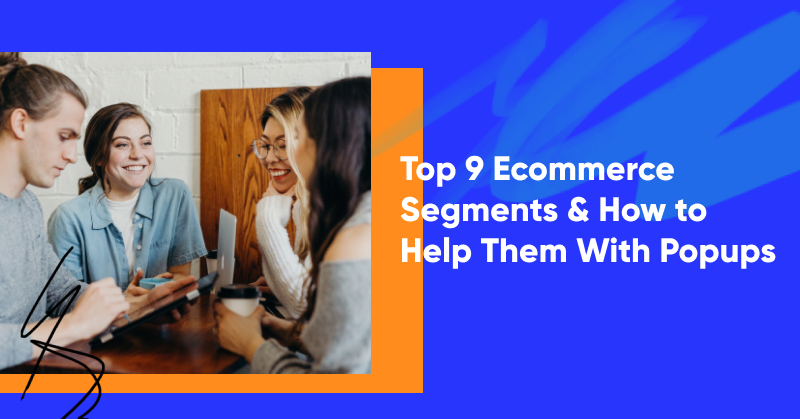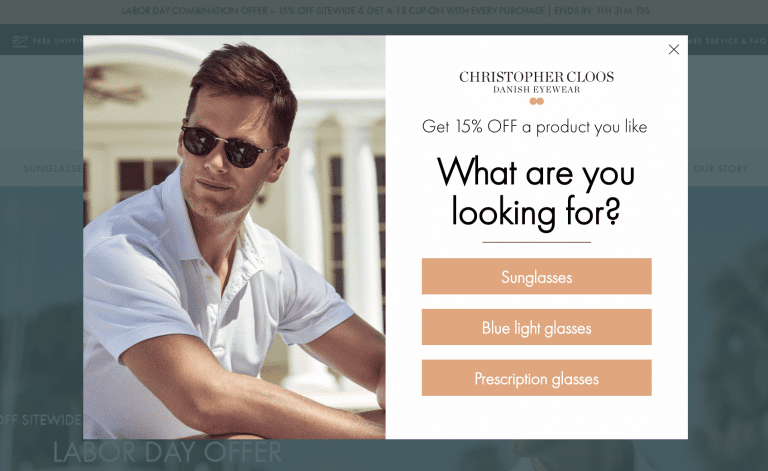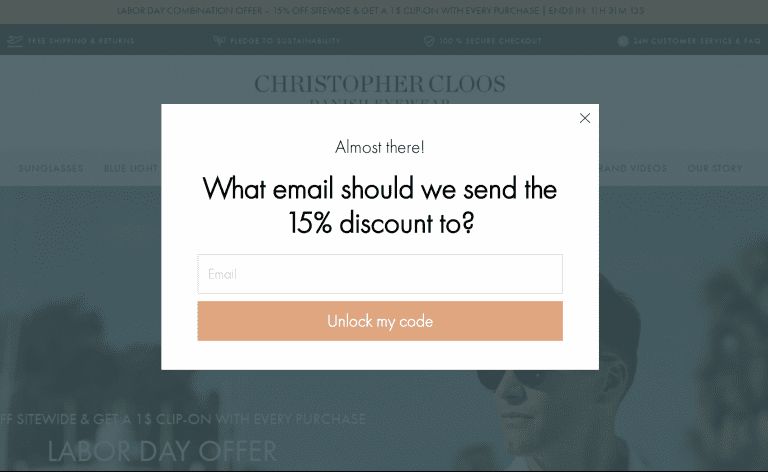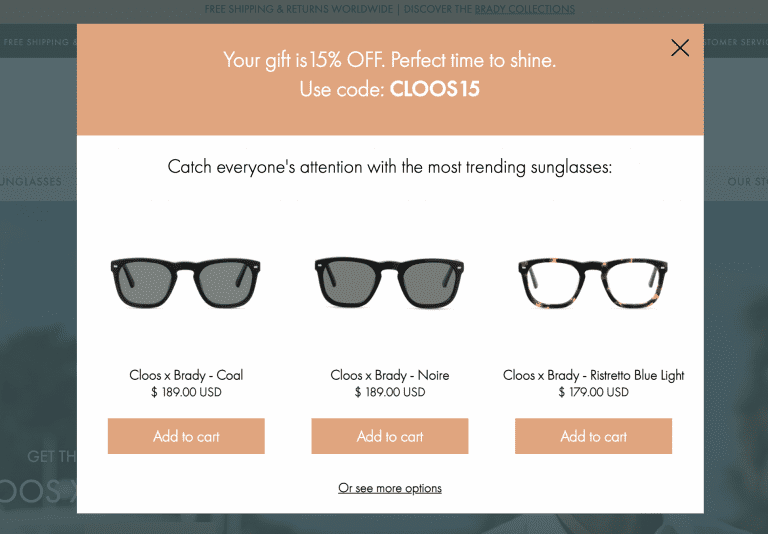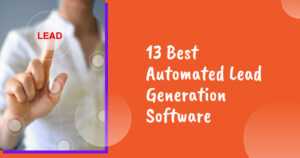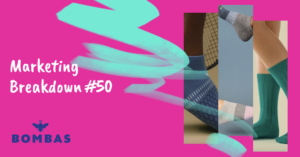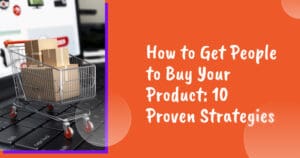In a perfect world, you’d be able to target every single one of your customers with a fully personalized message.
Unfortunately, we don’t live in a perfect world.
But luckily, you can organize your visitors into segments that share similar attributes and then create unique messages for each of these segments.
Today, we’ll discuss the 9 most important ecommerce segments you should target and share popup campaign recommendations for each segment.
Let’s dive right in!
What are customer awareness stages?
To get started with segmenting your visitors, it’s crucial to understand the customer awareness stages.
Each customer moves through the following stages of awareness:
- Problem unaware: They are unaware that they have a problem or that you can solve their problem, so they don’t know where to start.
- Problem aware: They know that they have a problem or desire, but they either don’t know how to fix it or aren’t sure where to get their needs met.
- Solution aware: They know there’s a solution, but they can’t decide which product is the best fix.
- Product aware: They know there’s a solution to their problem and are aware of the best products for the job, but they can’t narrow down which product would be the best choice.
- Most aware: They have found the right product to solve their problem—they’re just waiting for a good offer to make the purchase.
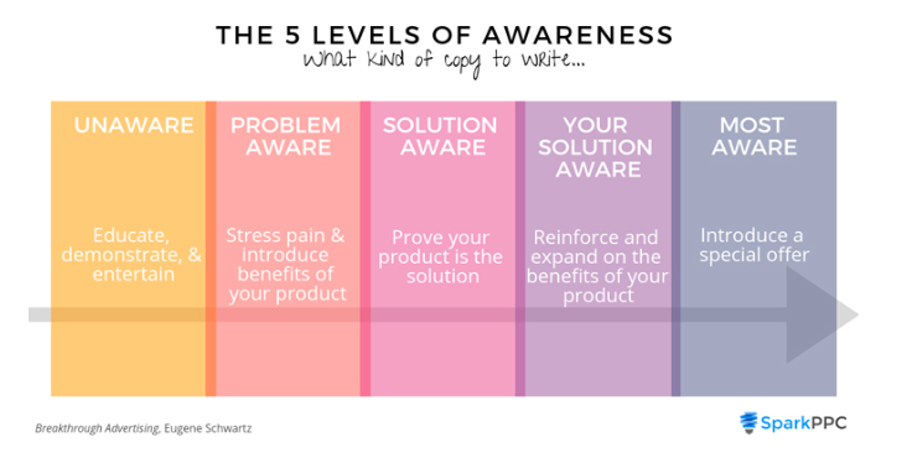
Top 9 e-commerce segments with the best popup use cases
Now let’s check out the top 9 segments and the best popup use cases to help each segment move to the next customer awareness stage.
1. Blog article visitors
Blog article visitors are usually “problem aware.”
They’ve come to your site to read about a problem they have. Visitors are still researching at this point, and they won’t be ready to buy until they find the right solution for their problem.
Your goal is to help them gain the insight they need about their problem and offer possible solutions. You can do this by providing a useful ebook that offers more information on the subject they’re reading about.
Don’t forget to ask them to sign up for your newsletter list in exchange for the free guide. This way, you can get in touch with them via email later.
Here’s an example: if you have an article about “running tips for beginners,” you could also promote a free ebook that gives tips on choosing running shoes.
2. New homepage visitors
Visitors who land on your homepage are usually aware of the solution to their problem and are searching for definitive options.
For example, they might have come from a Google search. Or they could have read one of your blog posts and then decided to learn more about your website.
At this stage, your goal is to show them the best products that you have for solving their problem. And you want to make this process as smooth and enjoyable as possible.
A conversational popup is a great way to do that!
Conversational popups are ideal for making a good first impression on your new webpage visitors. And it also helps you provide personalized product recommendations to them.
3. Category page visitors
When a visitor makes it to one of your category pages, they are solution aware.
They usually arrive at your site via a Google search. At this point, they know what type of product will solve their problem and are actively weighing their options. This means that your goal is to help them find the best product within a category to solve their problem.
Since you’re already aware of the product category they’re interested in, you could use a few different approaches here.
For example, you could show them the most popular products (or “trending” products) in their category of interest.
This type of “social proof” helps your shopper gain confidence and ultimately make the right decision. That’s why they’ll be happy to engage with your popups.
Here’s an example:
4. Product page visitors
Once visitors have moved from browsing a category page to viewing a specific product page, they become product aware.
This means they know about your product and understand how it can solve their problem, but they may still be unsure whether it’s the best choice for them.
To move this segment of visitors along in your conversion funnel, you need to convince them that the product they’re viewing is the one for them. There are many strategies for “closing the sale.”
You could give them a good deal on the product they like. By offering a discount or free shipping, you can raise your product above the competition.
You could also increase a visitor’s fear of missing out (FOMO) by using limited-time offers or “while supplies last” messaging.
Urgency and scarcity both work to entice visitors to buy now rather than later—which is exactly what you want as a store owner.
5. Returning non-customers
Engaging with returning visitors who are non-customers can be difficult and easy at the same time. Why? Because they’re fully product-aware, but they’re not willing to make a purchase yet.
There could be several reasons for this reluctance. Perhaps they felt the need to shop around a bit more, or maybe they simply didn’t have plans to make a purchase during their last visit.
Whatever the case, your goal is to welcome them back and remind them about the products they were looking at during their last visit. This can make it easier for them to continue shopping because they won’t have to navigate back to those products on their own.
Popups, like the one below, are helpful to get returning non-customers up to speed.
6. Visitors with active coupon
Visitors with an active coupon are fully aware of their problem, your brand, and how your products can solve their problem.
They’ve already subscribed to your email list in exchange for a coupon code and are continuing to browse through your products.
Your only goal at this point is to convince them to use their coupon code and finish their purchase.
You could use a sticky bar that promotes the active coupon code. Once again, you can increase the effectiveness of your campaign by including a countdown timer that heightens your visitors’ sense of urgency.
7. Cart abandoners & checkout abandoners
Visitors who place items into their cart are also part of your “fully aware segment,” even if they decide to leave your site without finishing their purchase.
When they try to leave your website, it’s time to guide them to complete their purchase by using popups!
At this point, an irresistible special offer can convince them to buy now rather than later.
Limited-time offers are the best way to stop cart abandoners in their tracks and ensure that they make a purchase.
Here’s a good example:
8. Just purchased
Customers who just made a purchase are one of the most important ecommerce segments. That’s because it costs five times more on average to acquire a new customer than to keep an existing one. Your loyal customers are the lifeblood of your online business.
When someone has finally made a purchase, they’re usually quite happy and looking forward to the delivery. This is a great time to plan ahead for future purchases.
You can do this by offering a discount code in exchange for giving feedback on the purchase experience. This way, you’ll gain valuable insights about your website and business, and you’ll also give your shoppers a powerful reason to return to your store.
Here’s a great post-purchase feedback popup template:
9. Returning customers
Returning customers are fully aware of your brand and your products.
They’ve already made a purchase, and they’re now returning to your website to make another, perhaps because they need to restock or because they loved their purchase so much that they want to try out more of your offerings.
This is the perfect time to use a “welcome back” popup that displays your newest products or promotes your seasonal sale.
This popup template for returning customers is one of the many options you can find in OptiMonk’s template library:
FAQ
What are ecommerce segments?
Ecommerce segments refer to distinct categories or niches within the broader realm of online retail. These customer segments are defined by factors such as target audience demographics, product categories, purchase history, and market trends.
Why is customer segmentation important in ecommerce?
Customer segmentation is crucial for tailoring marketing strategies, product offerings, and user experiences to meet the specific needs and preferences of different customer groups. By catering to distinct customer segments effectively, you can improve customer satisfaction, drive sales, and foster long-term loyalty.
How can popups benefit your marketing efforts?
Popups can be powerful tools for engaging website visitors, capturing leads, promoting products, and driving conversions across various customer groups. They can be strategically used to deliver targeted messages, discounts, product recommendations, and offers that resonate with specific customer groups.
Recap
We hope you found this article useful. By setting up these popups, you can help users move along to the next stage of the user journey, maximizing the lifetime value of all your customers by building lasting relationships with them.
As you may have noticed, this process doesn’t begin after your customers make a purchase. You should be thinking about increasing your average customer value from the very beginning of the customer journey. Therefore, the messages you send to your customers in the unawareness stage (and the stages after that) must flow towards the post-purchase stage.
By applying the right popup use cases for each segment, you’ve already won half the battle of building strong customer relationships and growing your average customer value.
If you’d like to read about this topic in more detail, download our Customer Value Optimization Guide.
